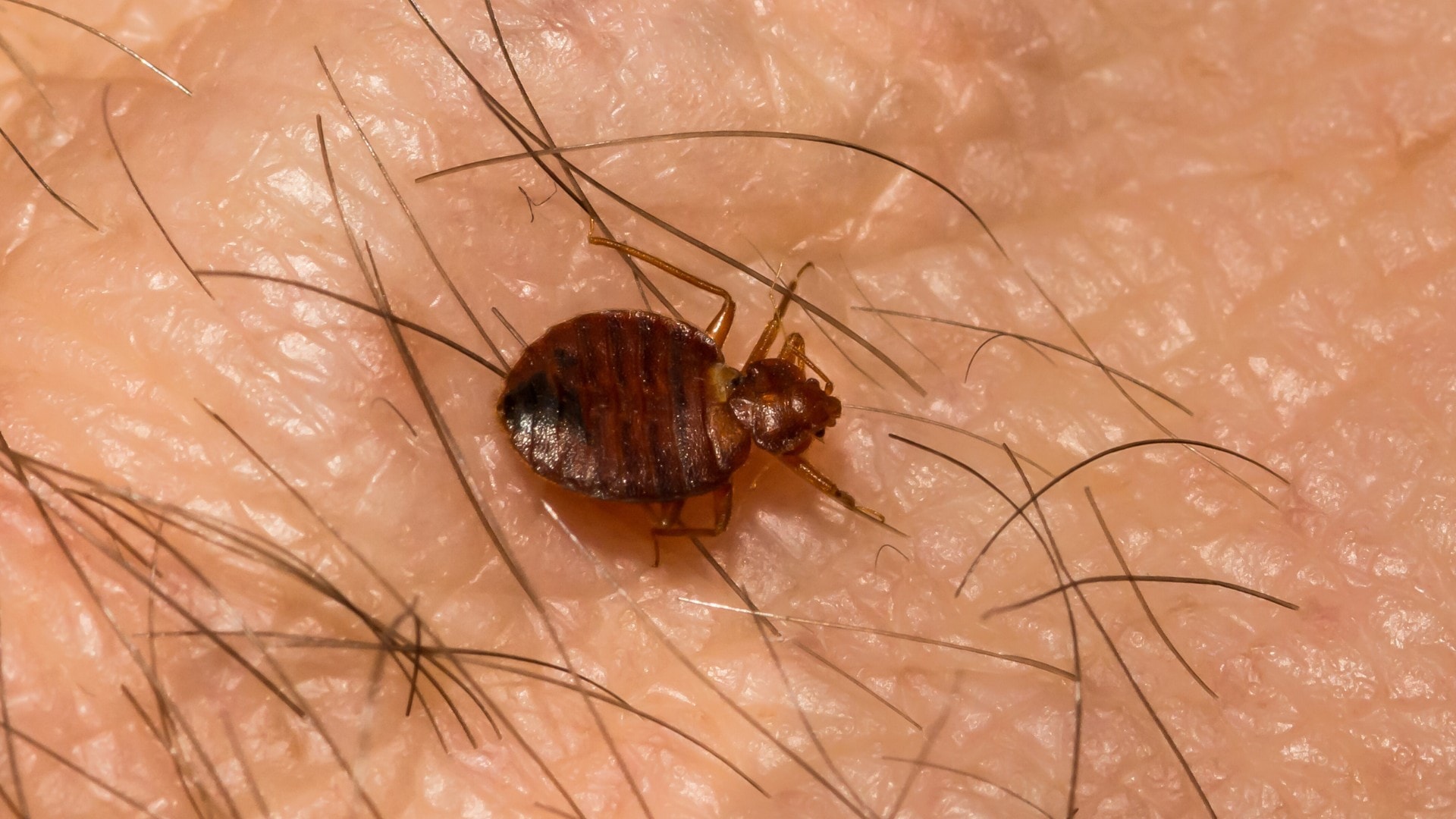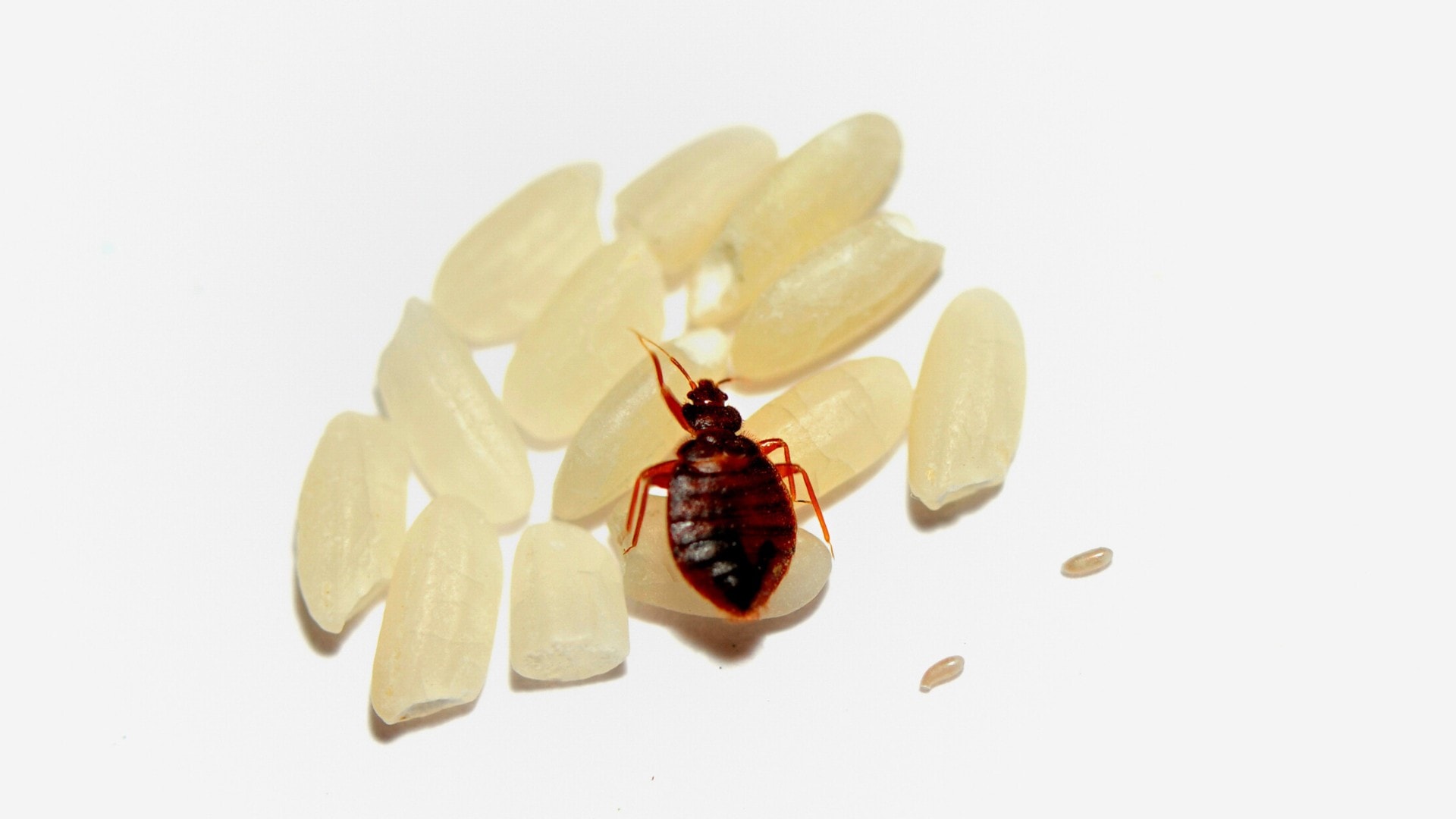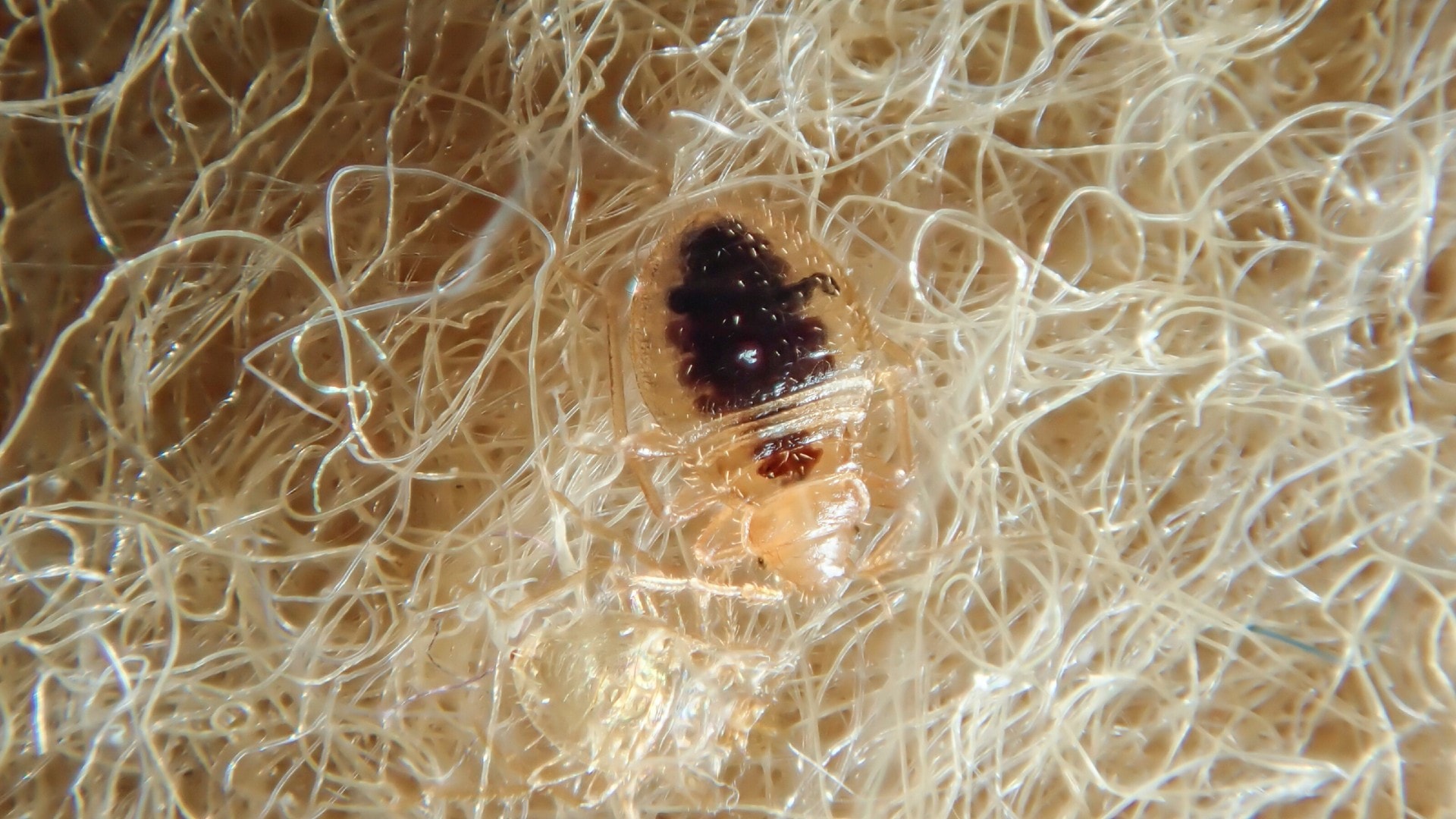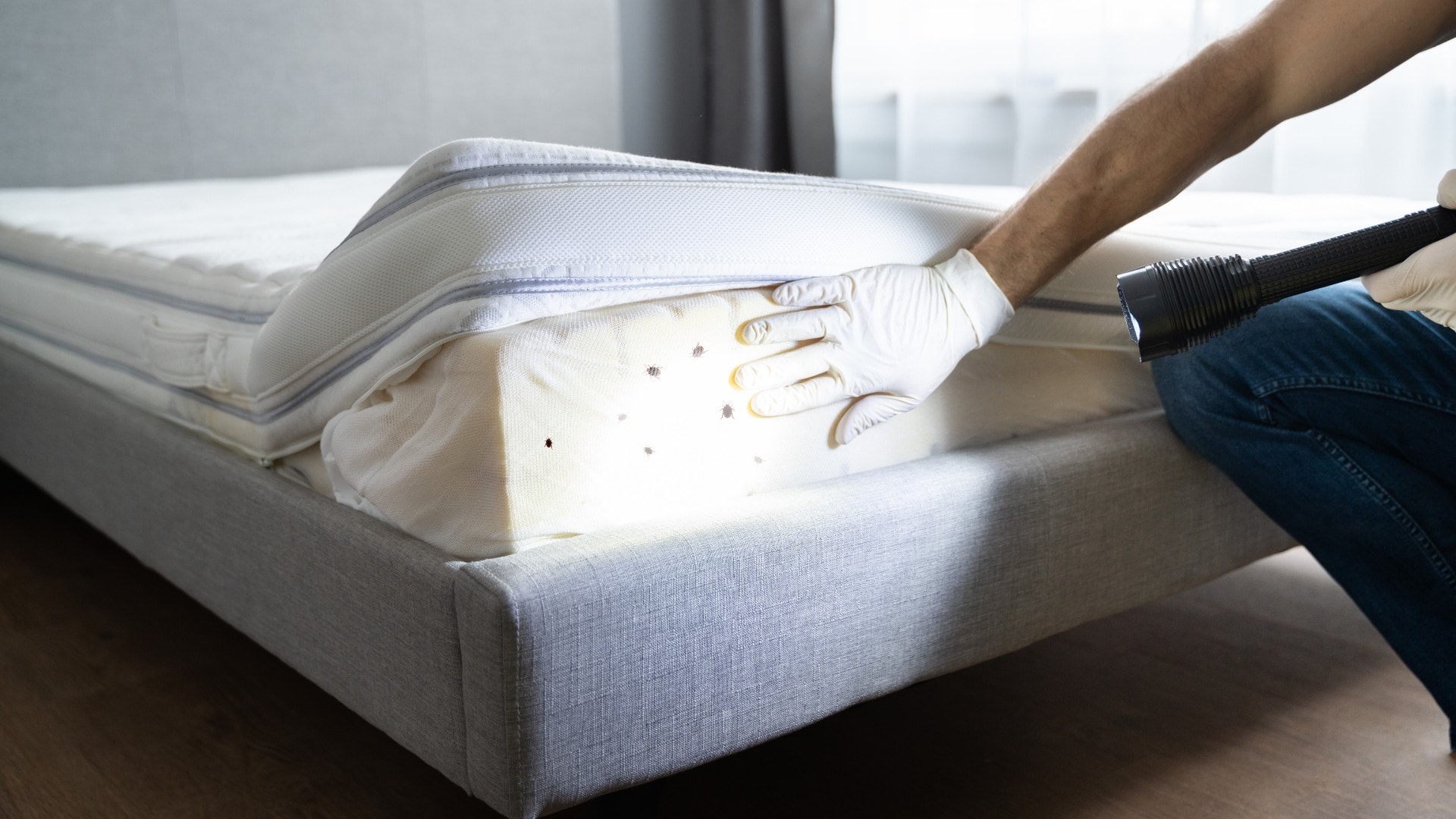Introduction to Bed Bugs
Bed bugs, these tiny pests, have been a part of human history for centuries. They are mentioned in ancient texts and have traveled with us through the ages, from caves to modern homes.
Their resilience and ability to hitchhike on luggage, clothing, and furniture make them a common pest worldwide. This guide aims to help homeowners, travelers, and apartment renters understand what bed bugs look like and how to identify them.

Identifying Bed Bugs
Adult Bed Bugs Appearance
Adult bed bugs are small, flat, and oval-shaped insects. They are about the size of an apple seed, measuring approximately 4-5 millimeters in length.
Their color ranges from reddish-brown to mahogany, and they have six legs and two antennae. Despite their small size, adult bed bugs are visible to the naked eye.
Nymphs
Nymphs, or juvenile or young bed bugs, are smaller than adults and can be more challenging to spot. They go through five growth stages, each requiring a blood meal to molt.
Bed bug nymphs start out nearly transparent and become more visible as they grow, turning a lighter brown color. At their smallest, they are about 1 millimeter long.

Here, you can see how small a bed bug is compared to rice grains. Bed bug eggs (right) are extremely small.
Bed Bug Eggs
Bed bug eggs are tiny, about the size of a pinhead, and white or cream-colored. They are often found in clusters and can be tricky to see without magnification. Eggs are typically laid in hidden, sheltered locations, making them challenging to detect.
Bed Bug Behavior
Where They Hide
These pests are nocturnal. Bed bugs hide close to their food source. Common hiding spots include mattress seams, box springs, the bed frame, and headboards. However, you can also find bed bugs in cracks and crevices in walls, furniture, and even behind wallpaper or electrical outlets.
How Bed Bugs Bite
Bed bugs feed on the blood of humans and animals. They are attracted to body heat and the carbon dioxide we exhale.
Feeding typically occurs at night, and a single meal can last between 3 to 10 minutes. After feeding, bed bugs retreat to their hiding spots to digest and prepare for their next meal.
Reproductive Cycle
Bed bugs reproduce rapidly. A single female can lay up to 500 eggs in her lifetime, usually at a rate of 1 to 5 eggs per day. Eggs hatch within 6 to 10 days, and nymphs reach adulthood in about five weeks, depending on temperature and availability of food.

Bed bugs can be hard to spot on some types of upholstery.
Signs of a Bed Bug Infestation
Physical Evidence
Physical signs of bed bugs include live bed bugs, shed skins, and fecal stains. Fecal stains appear as small, dark spots on mattresses, bed sheets, and walls. Shed skins are the exoskeletons left behind by molting nymphs.
Bed Bug Bites
Bed bug bites are another indication of an infestation. These bites often appear as small, red, itchy bumps on the skin. They are usually found in a line or cluster and can be mistaken for other insect bites or skin conditions.
Fecal Stains
Fecal stains are small, dark spots left behind by bed bugs after they feed. These stains are typically found on bedding, mattresses, and nearby furniture. They can also appear on walls and other surfaces.
Health Risks of Bed Bugs
Allergic Reactions
Bed bug bites can cause allergic reactions in some people. Symptoms may include swelling, itching, and redness around the bite area. In severe cases, individuals may experience hives or anaphylaxis, requiring medical attention from a bed bug bite.
Psychological Effects
Living with a bed bug infestation can lead to significant psychological distress. The constant fear of being bitten and the effort required to eliminate the pests can cause anxiety, insomnia, and stress.
The social stigma associated with bed bugs can also lead to feelings of embarrassment and isolation.
Prevention and Control Measures
Tips for Avoiding Infestations
Preventing a bed bug infestation is crucial. Here are some tips to keep them out of your home:
-
Inspect second-hand furniture before bringing it inside.
-
Use protective covers for mattresses and box springs.
-
Reduce clutter to minimize hiding spots.
-
Vacuum regularly and dispose of the vacuum bag immediately.
-
Be vigilant when traveling; inspect hotel rooms and keep luggage off the bed.
Steps to Take If Bed Bugs Are Found
If you suspect a bed bug infestation, act quickly to prevent it from spreading:
-
Confirm the presence of bed bugs through visual inspection or professional assessment.
-
Isolate the infested items by sealing them in plastic bags.
-
Launder bedding and clothing in hot water and dry on high heat.
-
Vacuum thoroughly and dispose of the vacuum bag outside.

If you feel squeamish, a professional can help you identify and treat the problem.
Bed Bug Treatments
Professional Extermination
Professional extermination is often the most effective way to eliminate bed bugs. Exterminators use a combination of heat treatments, chemical sprays, and other methods to eradicate the pests.
Heat treatments require raising the temperature in problem areas to levels lethal to bed bugs, generally around 120°F (49°C) and 125°F (52°C) for their eggs.
DIY Options
For those who prefer a do-it-yourself approach, several methods can help manage bed bug infestations:
-
Use bed bug-specific sprays and powders to target hiding spots.
-
Employ steam cleaners to kill bed bugs and their eggs on contact.
-
Apply diatomaceous earth, a natural powder that dehydrates and kills bed bugs.
Conclusion and Additional Resources
Bed bugs are a particularly stubborn and challenging pest, but with the right understanding of their habits, they can be managed and eliminated effectively.
Understanding what bed bugs look like, their behavior, and the signs of an infestation are crucial first steps. Prevention and prompt action are key to keeping your home bed bug-free.
For more information on dealing with bed bugs, consider consulting professional extermination services or checking out our extensive "How to Get Rid of Bed Bugs" guide.
With vigilance and effort, you can protect your home and loved ones from these unwelcome invaders.









